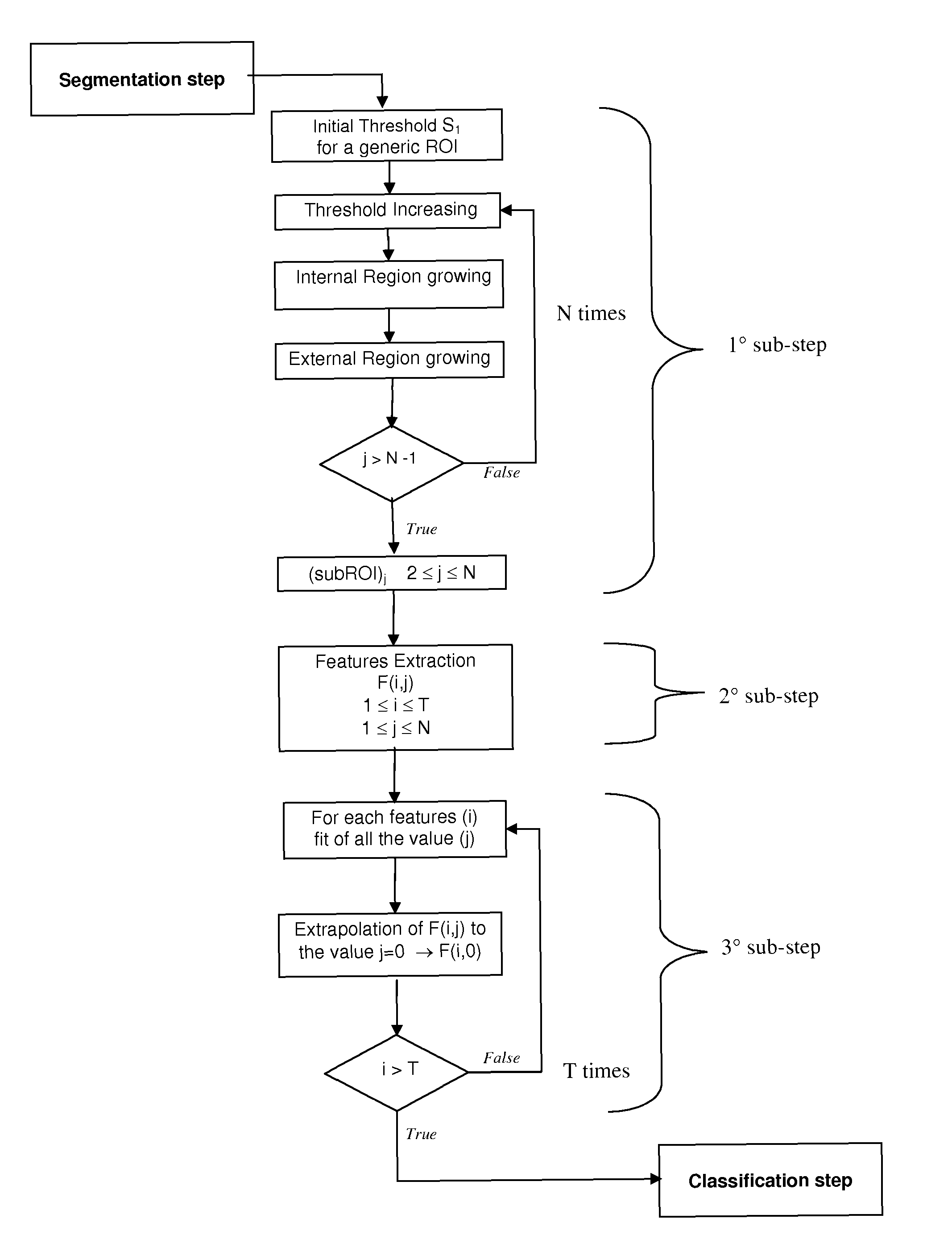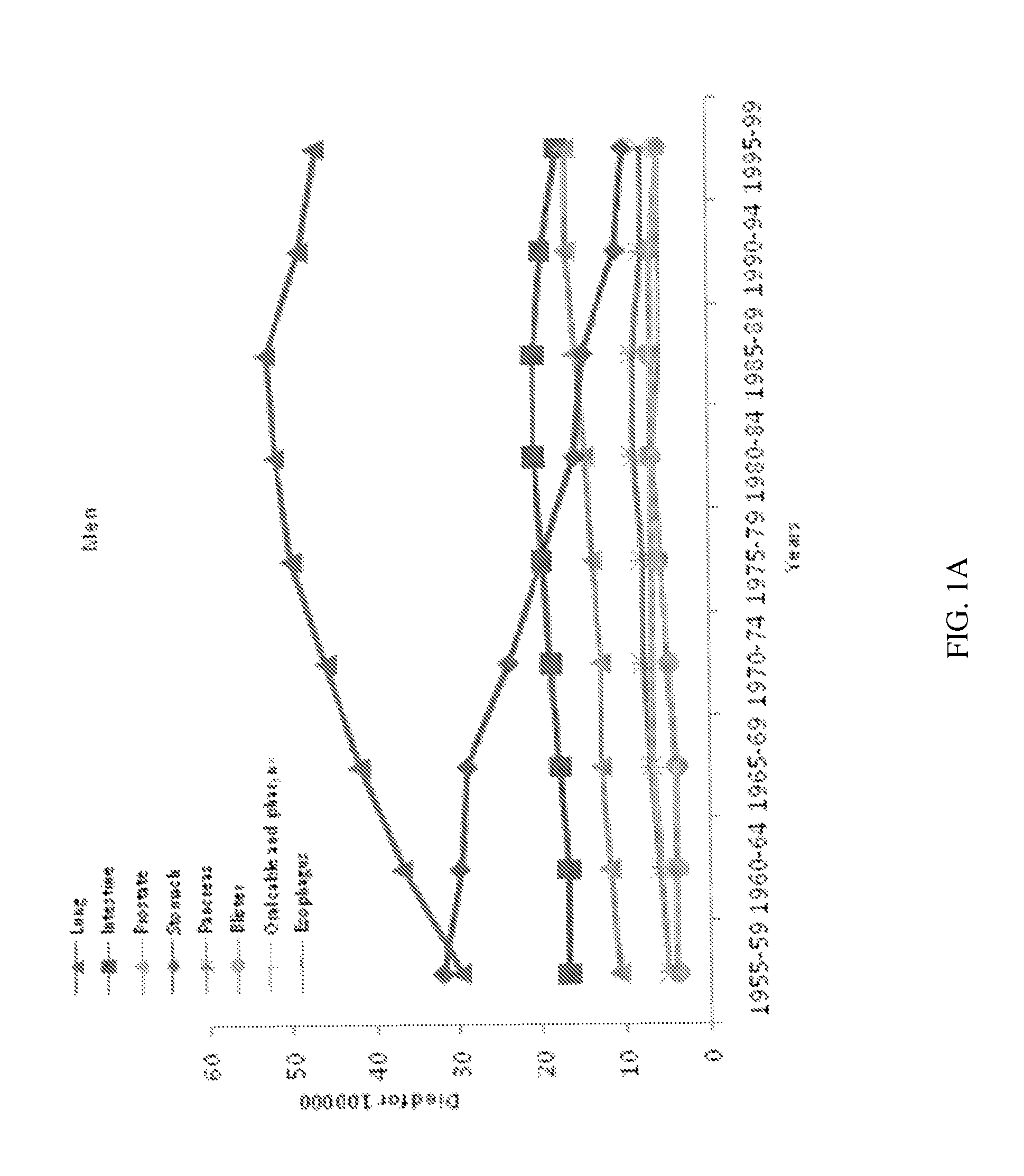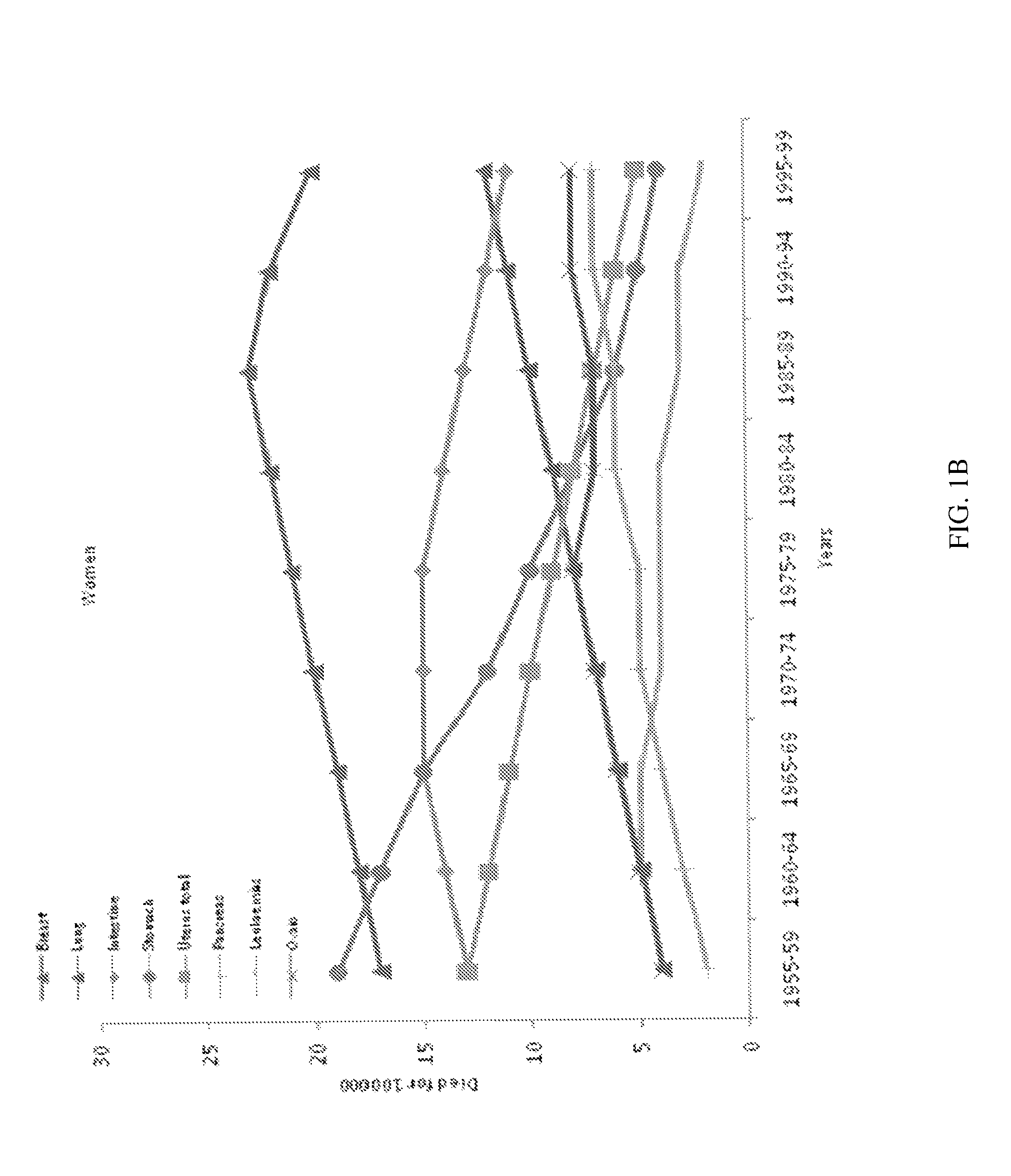Method for processing biomedical images
a biomedical image and image processing technology, applied in image data processing, character and pattern recognition, instruments, etc., can solve the problems of increasing tumour incidence, difficult early diagnosis of tumours, and real social problems, and achieve the effect of reducing management costs
- Summary
- Abstract
- Description
- Claims
- Application Information
AI Technical Summary
Benefits of technology
Problems solved by technology
Method used
Image
Examples
Embodiment Construction
[0055]Generally speaking, the functioning of a CAD can be divided in different steps that can be schematized as shown in FIG. 2, in which is represented a flow diagram of the method according to the present invention. The steps are the folio wings:[0056]pre-processing: the digital image is processed in order to delimit the mammographic area to be submitted to further analysis;[0057]segmentation: the cleaned image is segmented in order to select regions of interest (ROI) mapping out its contour;[0058]extraction: from each ROI is extracted some characteristic information;[0059]classification: to each ROI is assigned a probability of pathology;[0060]visualization: the full mammographic image is displayed on a screen or on paper, highlighting the ROIs having a pathology probability superior to a threshold value selected by the radiologist.
[0061]According to this invention, the extraction step is divided in 3 more sub-steps, as it will be explained in details:[0062]1° sub-step: N subROIj...
PUM
 Login to View More
Login to View More Abstract
Description
Claims
Application Information
 Login to View More
Login to View More - R&D
- Intellectual Property
- Life Sciences
- Materials
- Tech Scout
- Unparalleled Data Quality
- Higher Quality Content
- 60% Fewer Hallucinations
Browse by: Latest US Patents, China's latest patents, Technical Efficacy Thesaurus, Application Domain, Technology Topic, Popular Technical Reports.
© 2025 PatSnap. All rights reserved.Legal|Privacy policy|Modern Slavery Act Transparency Statement|Sitemap|About US| Contact US: help@patsnap.com



